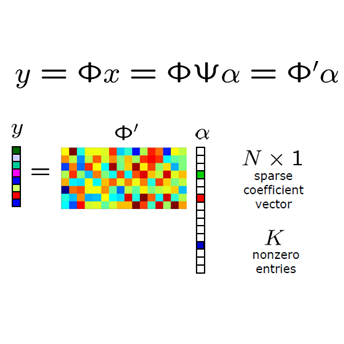The analysis sparsity model is a very effective approach in modern Compressed Sensing applications. Specifically, redundant analysis operators can lead to fewer measurements needed for reconstruction when employing the analysis $l_1$-minimization in Compressed Sensing. In this paper, we pick an eigenvector of the Zauner unitary matrix and -- under certain assumptions on the ambient dimension -- we build a spark deficient Gabor frame. The analysis operator associated with such a spark deficient Gabor frame, is a new (highly) redundant Gabor transform, which we use as a sparsifying transform in Compressed Sensing. We conduct computational experiments -- on both synthetic and real-world data -- solving the analysis $l_1$-minimization problem of Compressed Sensing, with four different choices of analysis operators, including our Gabor analysis operator. The results show that our proposed redundant Gabor transform outperforms -- in all cases -- Gabor transforms compared to state-of-the-art window vectors of time-frequency analysis.
翻译:分析宽度模型是现代压缩遥感应用中的一种非常有效的方法。 具体地说, 冗余分析操作员在压缩遥感中采用分析 $l_ 1美元 最小化方法, 可能导致重建所需的测量量减少。 在本文中, 我们选择了Zauner 统一矩阵的原始体, 在环境层面的某些假设下, 我们建造了一个火花不足的加博框架。 与这种火花不足的加博框架相关的分析操作员是一种新的( 高) 冗余加博变异, 我们用它来作为压缩遥感变异的绝缘。 我们在合成和真实世界数据上进行计算实验 -- 解决压缩遥感的分析问题, 包括我们的加博分析操作员在内的四种不同的分析操作员。 结果表明,我们拟议的多余加博变异形态 -- 在所有情况下 -- 加博变异与时频分析的现代窗口矢量相比。




